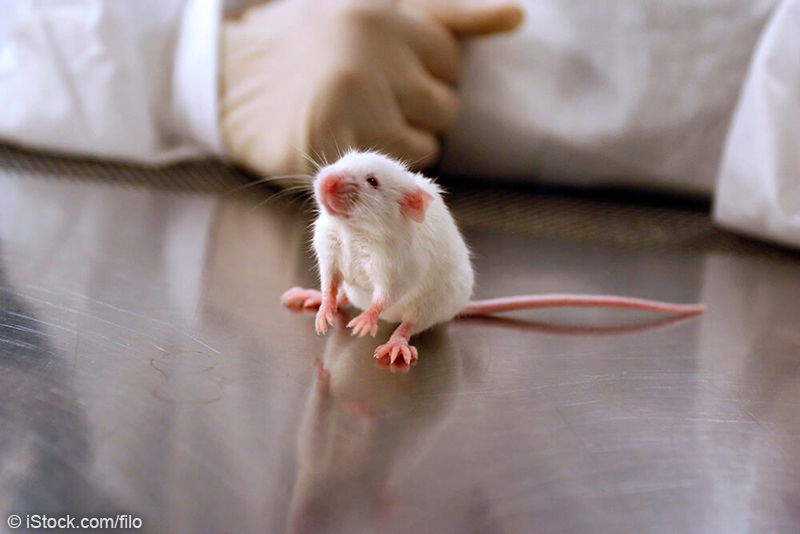UN INT Intro Text w/ Responsive Image - *Important Note* You must UNLINK this shared library component before making page-specific customizations.
Update (January 17, 2023): Humboldt University of Berlin’s instruction manual on how to treat rats in its laboratories must read something like this.
Step 1: Show how cute, social, and empathic rats are.
Step 2: Torment them by sticking wires into their brains.
Step 3: Kill them.
Humboldt experimenters just published a paper on a series of “tickle contagion” tests in which rats watched other rats being tickled by humans (something we know these animals usually enjoy). The observer rats became excited—so much so that they actually jumped for joy.
The video of this is, of course, adorable. What happened next … not so much.
Picture a rat with portions of their skull missing, gunk poured over the exposed brain tissue, and a bunch of equipment attached with wires poking through. (For some reason, there’s no video of this.)
There’s also no video showing experimenters killing the rats.
This cruelty is an encore performance that follows an exercise—equally irrelevant to human health—in which Humboldt experimenters played “hide-and-seek” with rats (details below), stuck electrodes into their brains, and killed them.
Take action below to tell university staff to end this cruelty.
Original post:
A study conducted at Humboldt University of Berlin, in Germany, became a minor media sensation recently because its conclusion, while merely illuminating the obvious, is adorable: Rats like to play "hide-and-seek."
Cute, right?
But the not-so-cute reality behind this study is that in order to glean this not-so-revolutionary insight, experimenters surgically implanted electrodes into rats' brains. And when they were done with them, experimenters killed them, removed their brains, and dissected them.

It's also important to note that the rats in this study died for nothing. No treatment for any human malady was discovered or advanced. No new knowledge rained down upon humanity, and no new age of enlightenment dawned—just dead rats and a cute headline or two. Curiosity-driven experiments like this are pointless and always end in a body count.
Clever headlines about joyful rats playing are heartwarming and nearly irresistible. Experimenters love them, because they so successfully hide the grotesque reality of animal experimentation. But the fact is that rats and mice are used the world over in cruel and worthless experiments that may be painful and are almost always deadly. In U.S. laboratories, these small, sensitive mammals aren't extended even the meager protections of the federal Animal Welfare Act. Anything can be done to them in a laboratory setting. In fact, more than 100 million mice and rats are killed in U.S. labs every year.
You won't find these facts in any cute story about rats playing "hide-and-seek." That's what makes these kinds of studies—and the headlines they generate—so insidious.
Don't be fooled—life inside a laboratory is no life for an animal. Animals go in, but rarely do they come out alive.
Please take action today and demand that Humboldt University cease these deadly experiments.